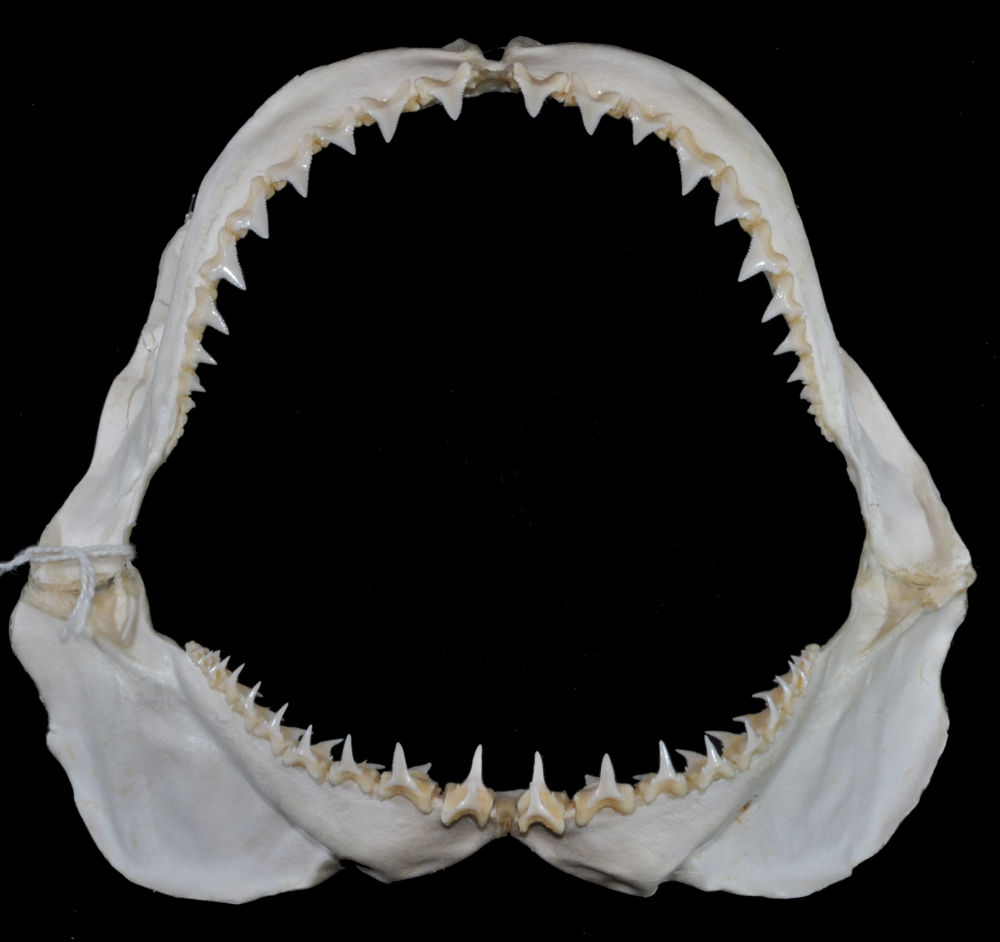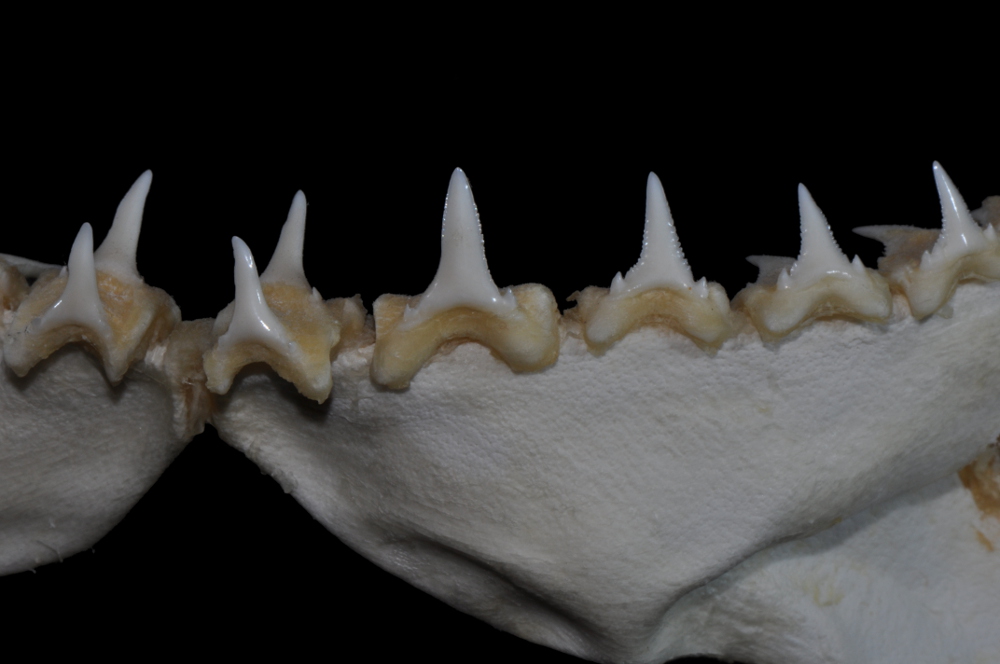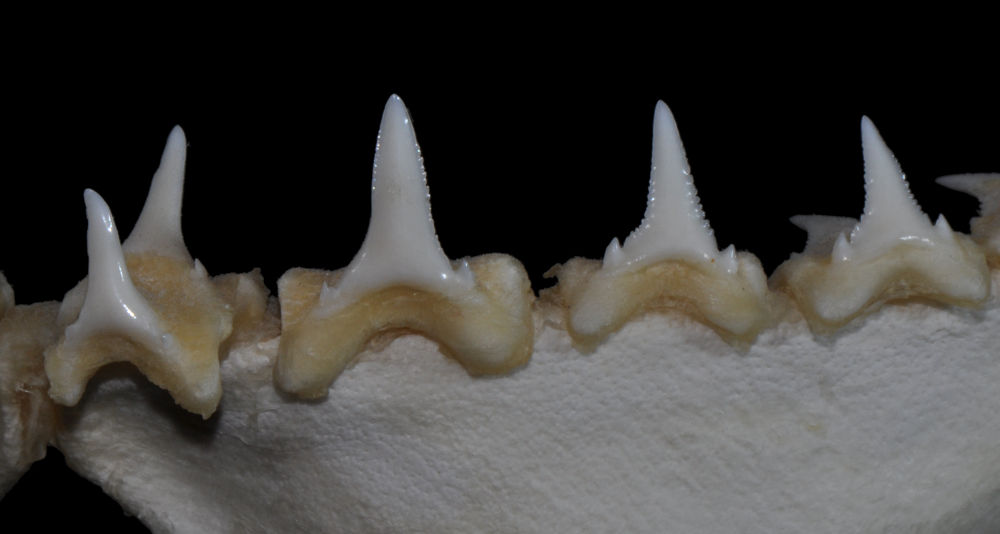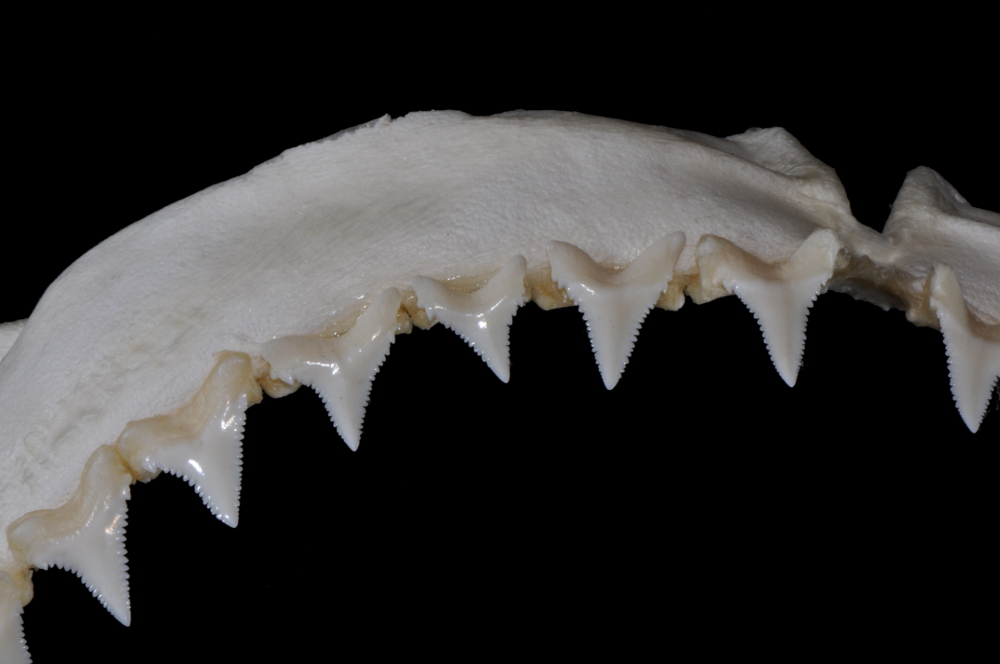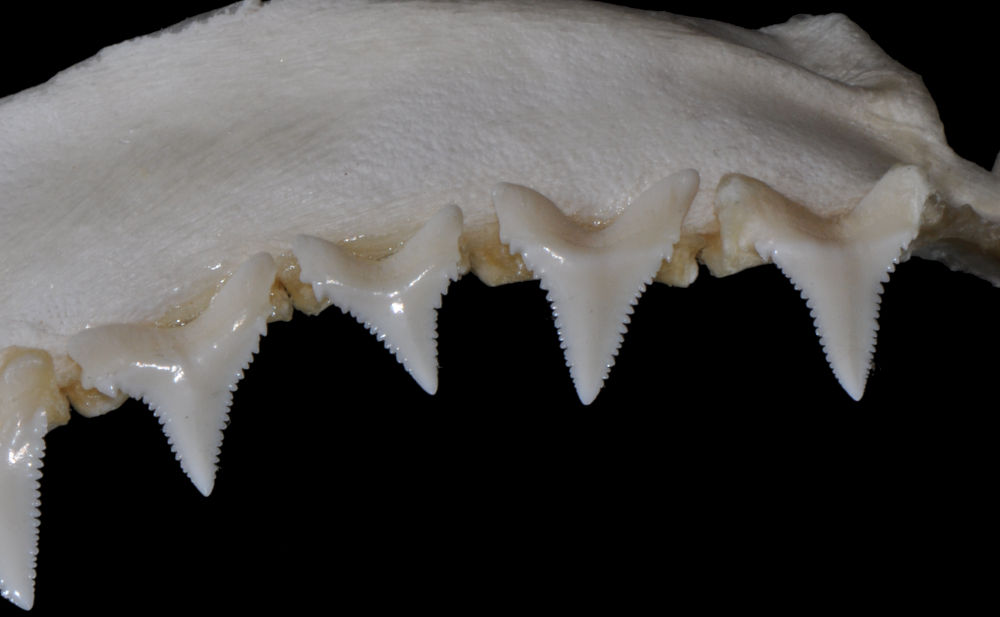Carcharodon carcharias (LINNAEUS, 1758)
Description after BASS et al. 1975 [#133]:
The characteristic triangular teeth with heavily serrated edges are shown in pl. 8, these examples coming from a specimen of about 230cm taken in Natal waters. The teeth of young specimens may resemble those of Isurus and, more particularly, Lamna in that some of them may be smooth-edged and lanceolate with distinct basal denticles. In a 140cm male some of the teeth are typical of Carcharodon (pl. 8 A) but those from near the centre of the lower jaws (pl. 8 B) could easily be taken as belonging to one of the other isurids or to an odontaspidid shark. The teeth of this shark are illustrated in full by J. L.B. Smith (1951). A 170cm female in our collection has all the teeth serrated but basal denticles are clearly visible in the teeth of the lower jaws.
The usual tooth count in 32 C. carcharias from Natal was 13-13/12-12. Variation in the number of teeth is summarised in table 7. No sexual dimorphism was apparent in the few adult jaws examined.
Plate 8 of BASS et al. 1975 [#133]
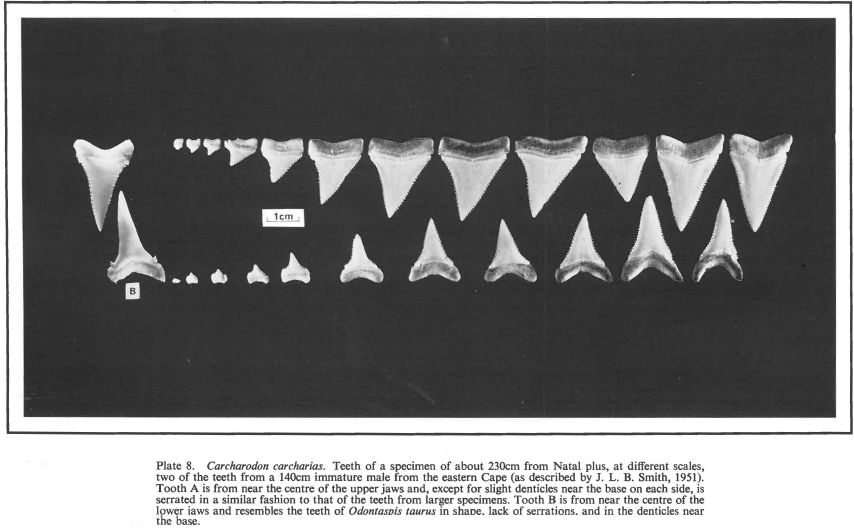
Material: sex?, 400 cm TL, caught 2 years ago at Geraldton, Western Australia
Images: © Simon A De Marchi, clean-a-jaw, images shows the correct position of the teeth
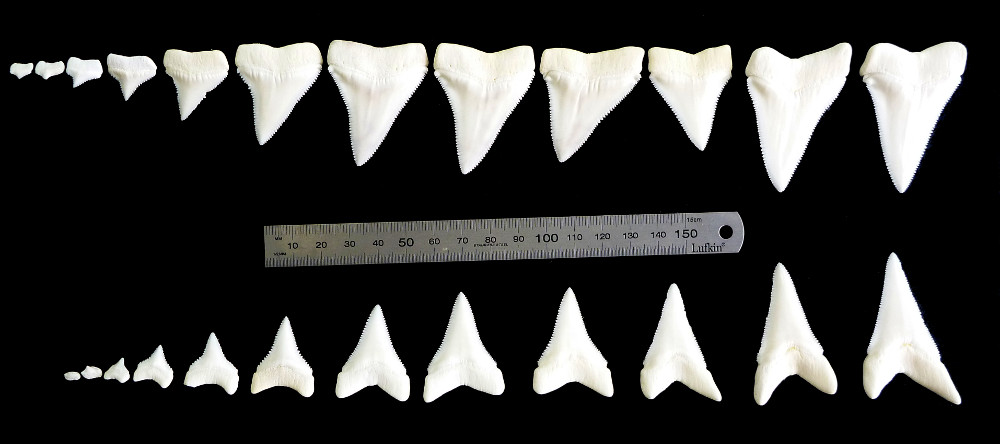
Material: sex?, TL?
Images: © Simon A De Marchi, clean-a-jaw, images shows the correct position of the teeth

Material: sex?, TL?, off Hobart, Australia, coll. 06/1982, coll.by fishermen and P. Lewis, American Museum of Natural History (AMNH) collection nr. I-53095
Images: © Ross Robertson, Smithsonian Tropical Research Institute, Panama, images shows the correct position of the teeth 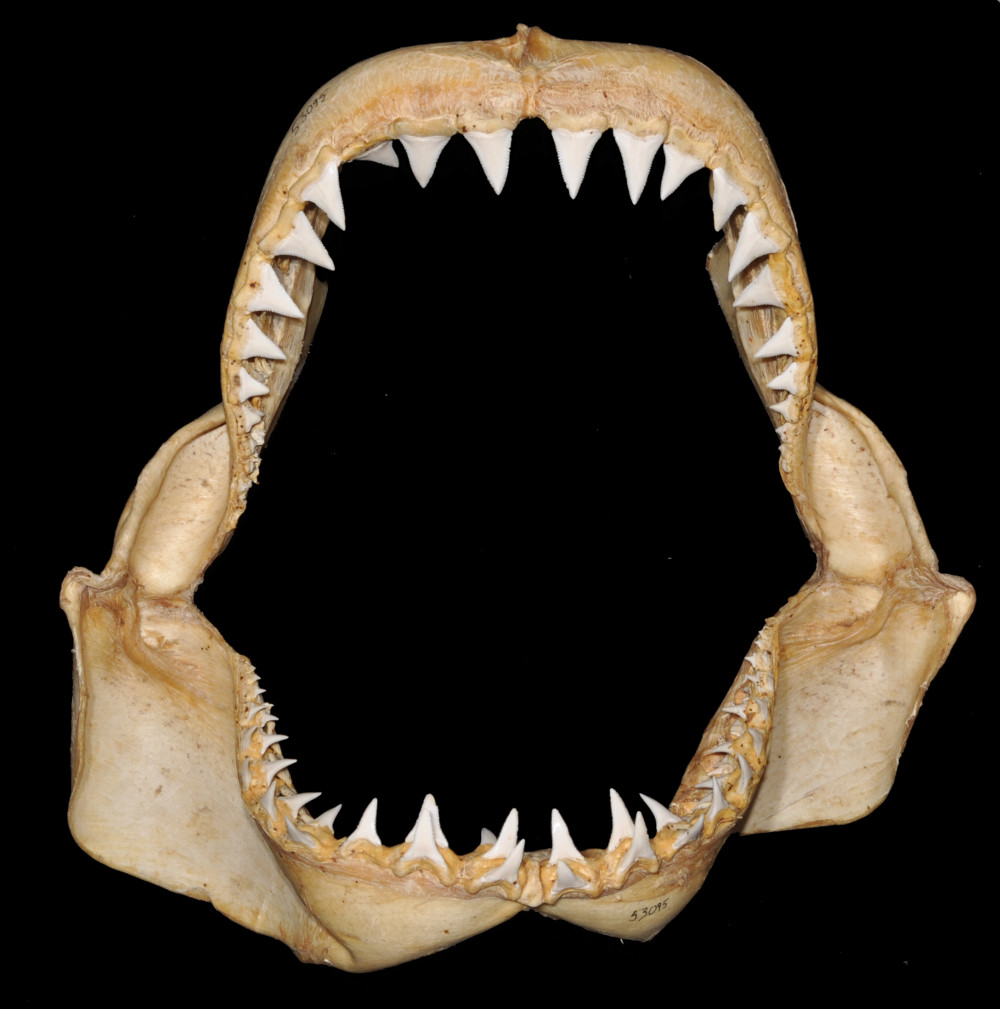
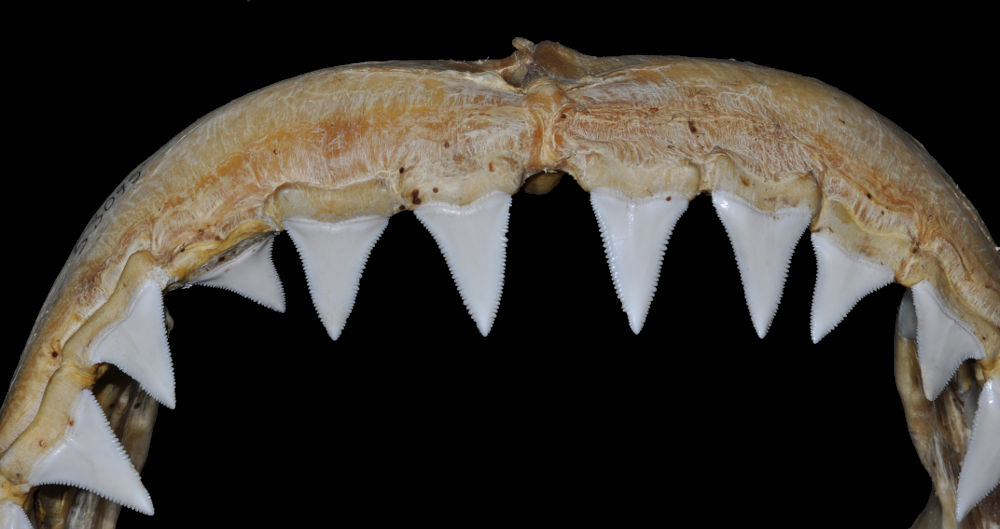
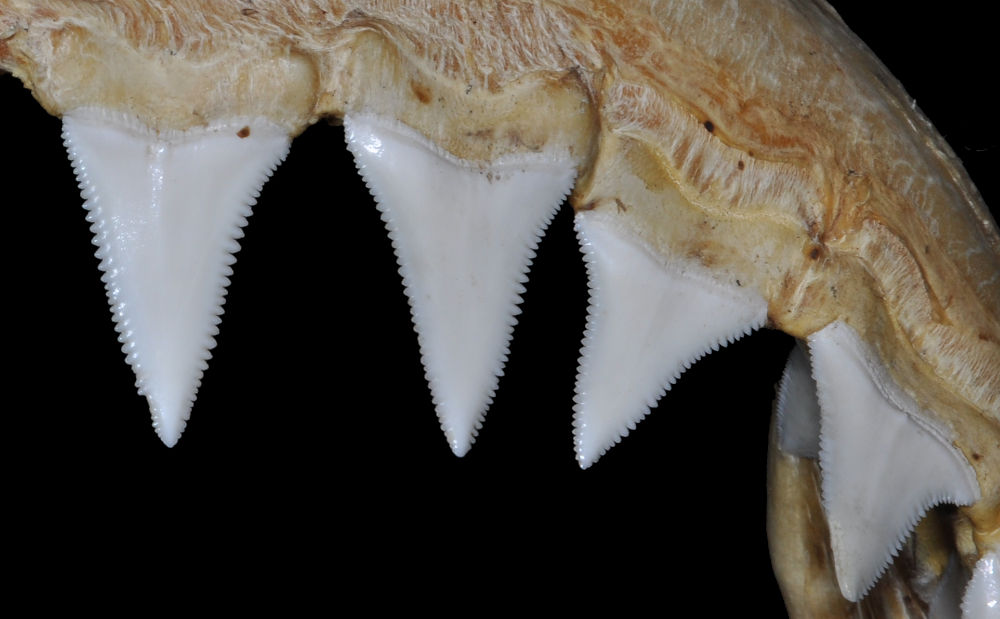
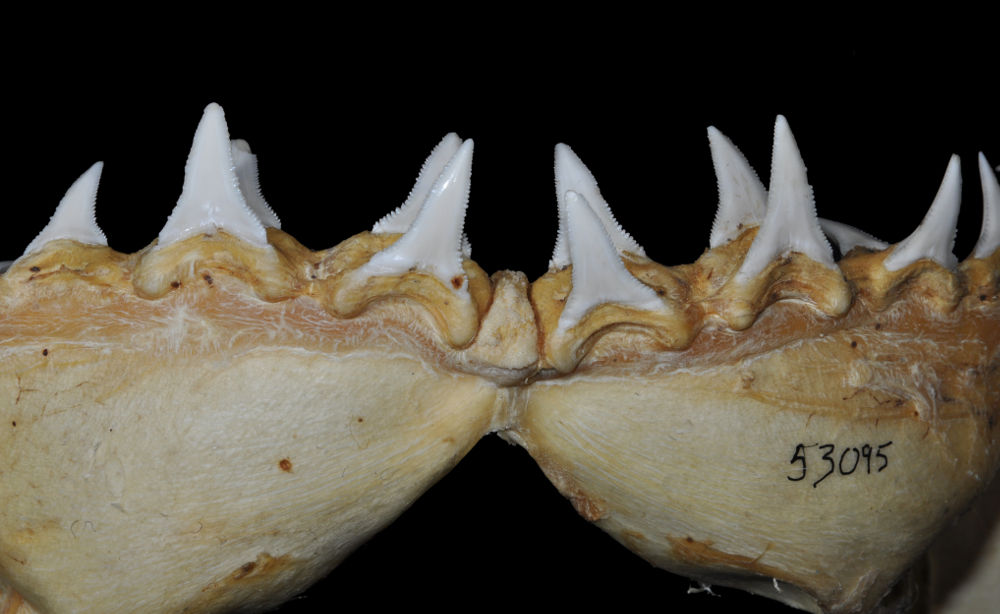
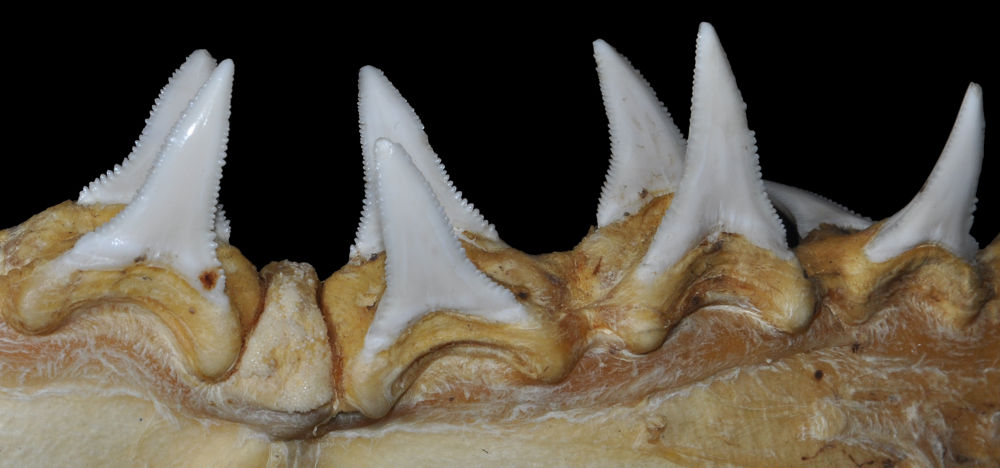
Material: male, juvenile, 157 cm TL, off Ventura, California, coll. 06/1996, collection: Jaws International, Gordon Hubbell, Florida
Images: © Ross Robertson, Smithsonian Tropical Research Institute, Panama, images shows the correct position of the teeth
For a new study about the Homology of Lateral Cusplets in the Teeth of Lamnid Sharks see Bemis et al., 2015 [#23260]: "Structures in the teeth of juvenile White Sharks, C. carcharias, were interpreted as lateral cusplets in some previous studies, but we show that they develop differently from lateral cusplets in the teeth of Lamna and Carcharias. We conclude that the structures in Carcharodon are not homologous to the lateral cusplets of Lamnaand Carcharias taurus and propose the new name, serrational cusplet, for them."
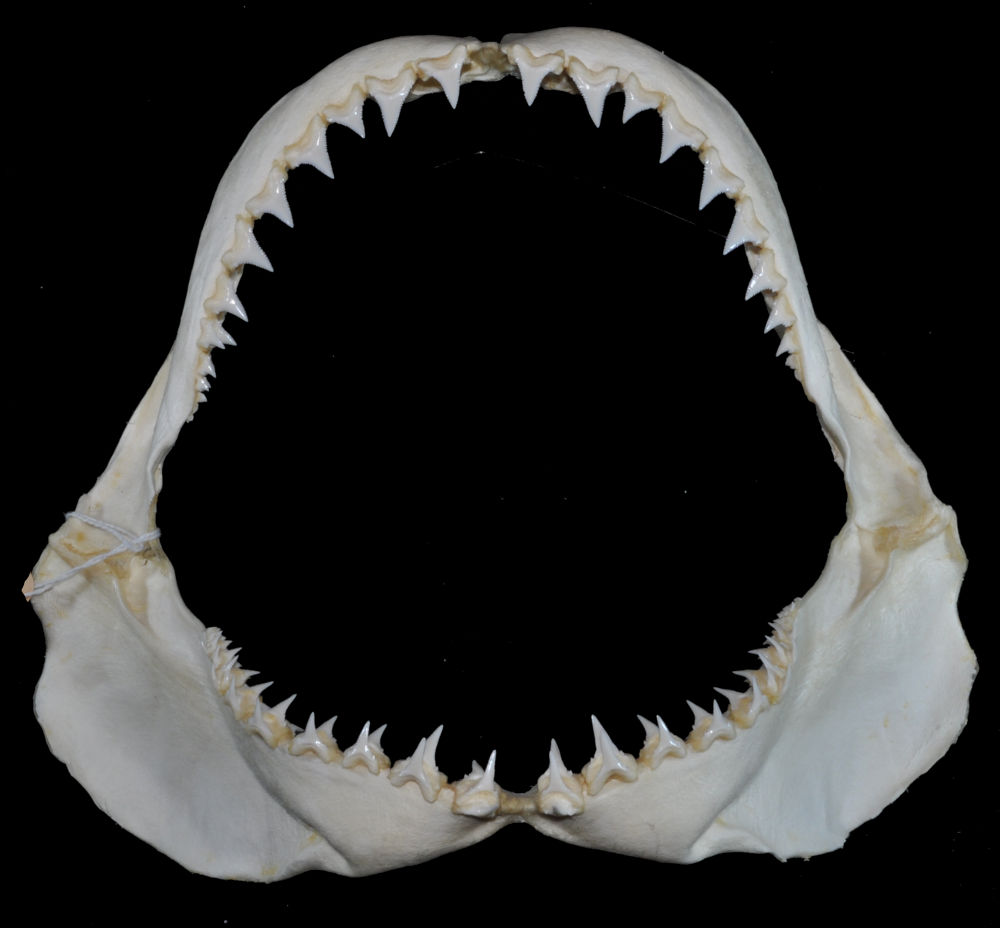
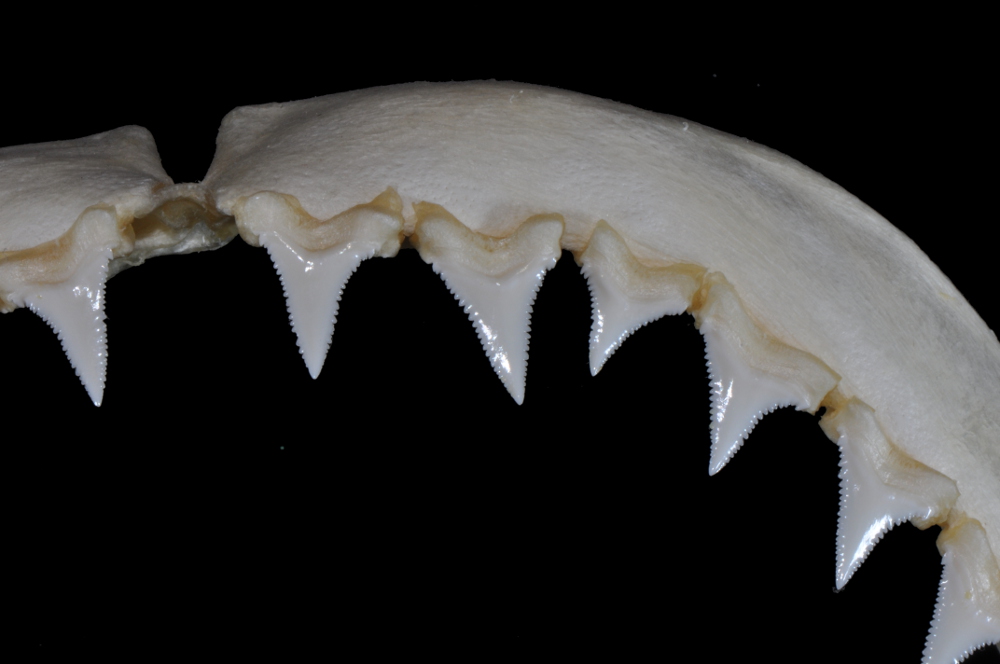
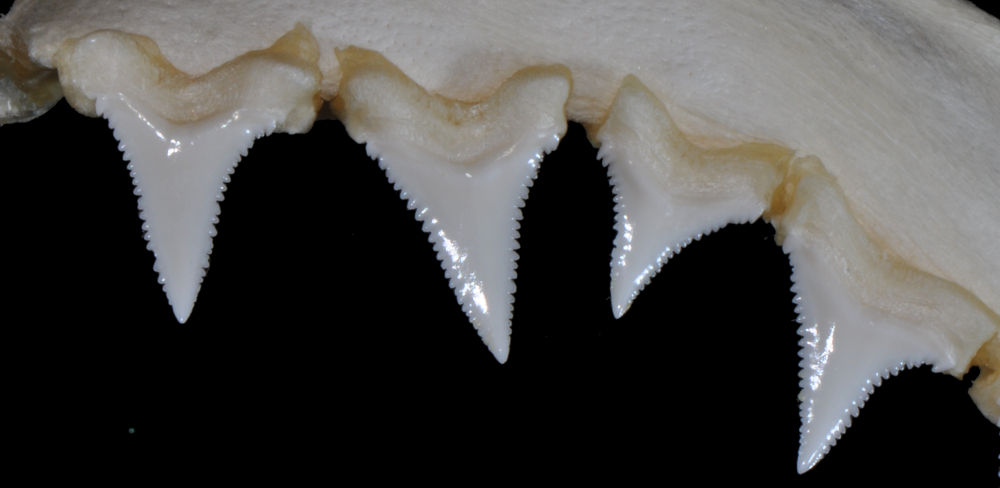
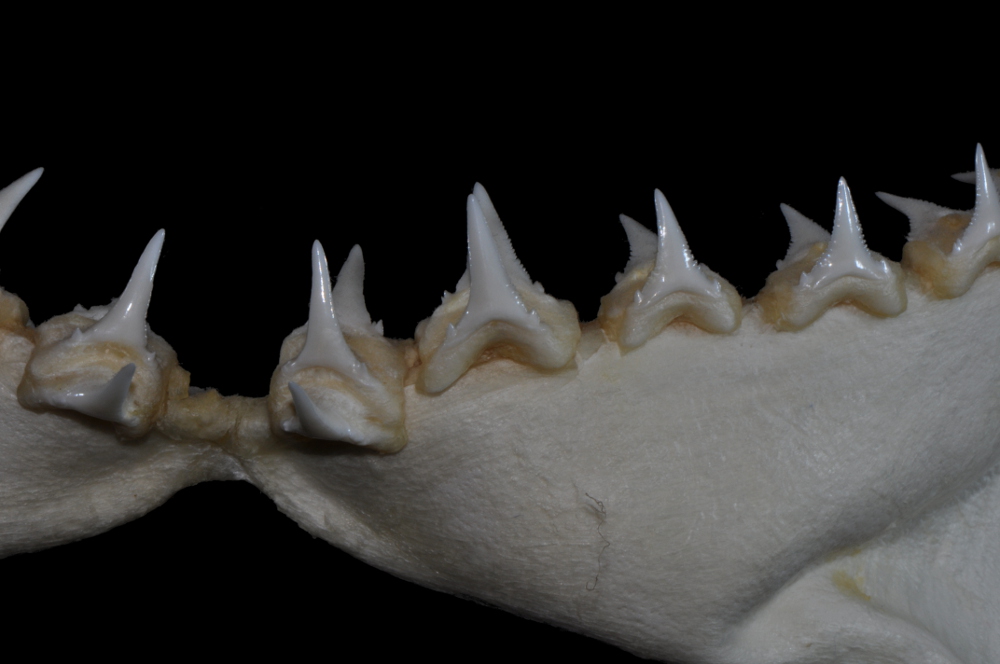
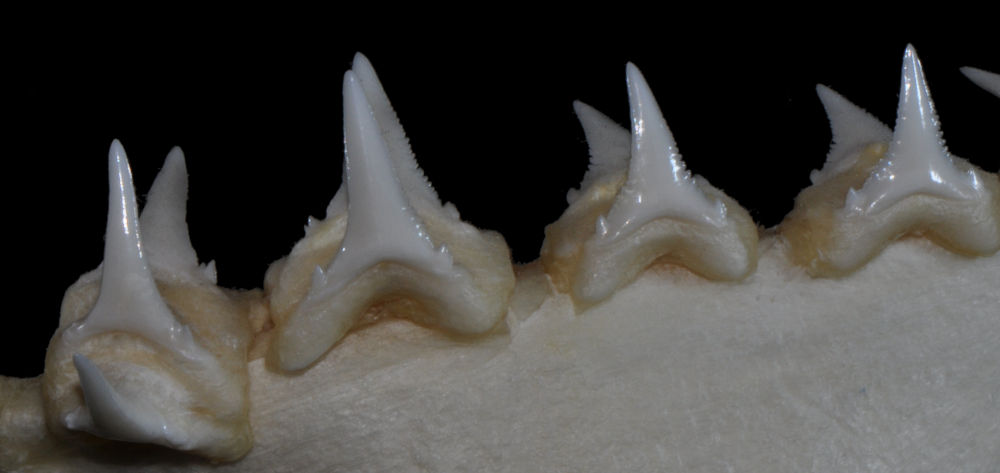
Material: male, juvenile, 124 cm TL, 12,3 kg, coll. 06.08.1987, collection: Jaws International, Gordon Hubbell, Florida
Images: © Ross Robertson, Smithsonian Tropical Research Institute, Panama, images shows the correct position of the teeth 